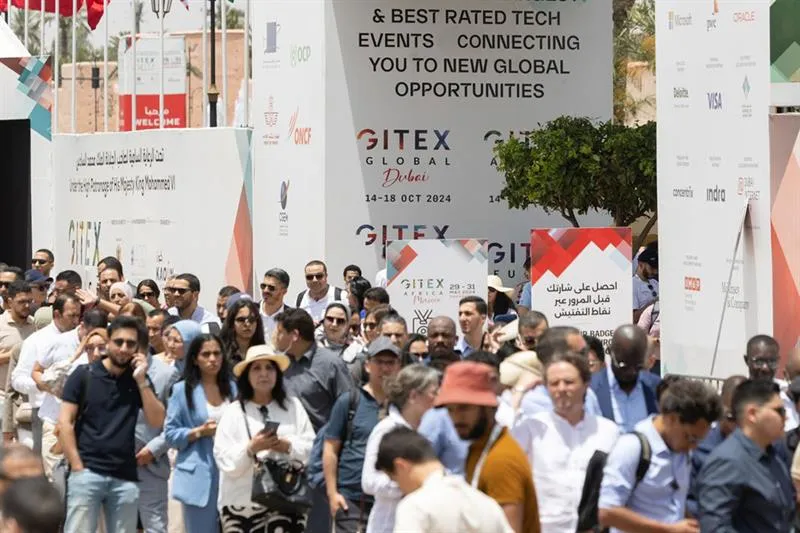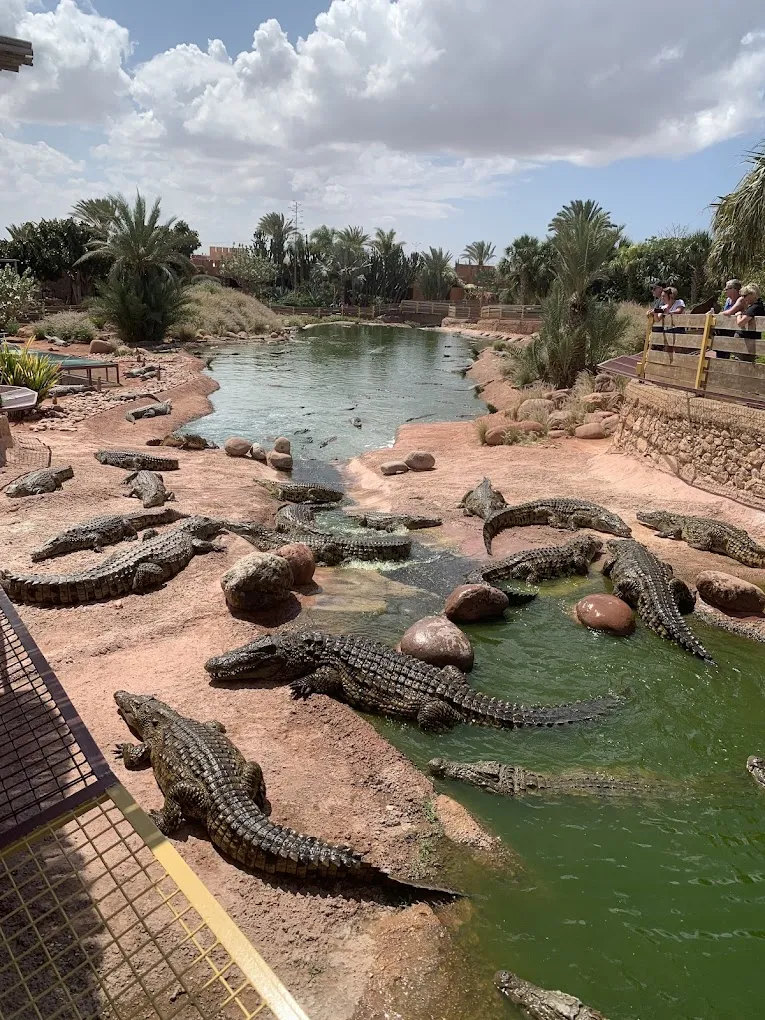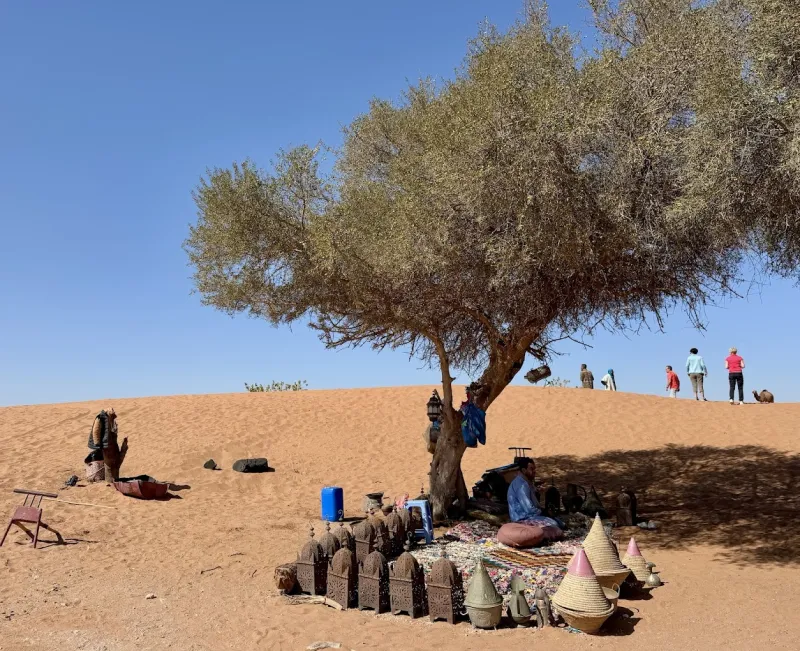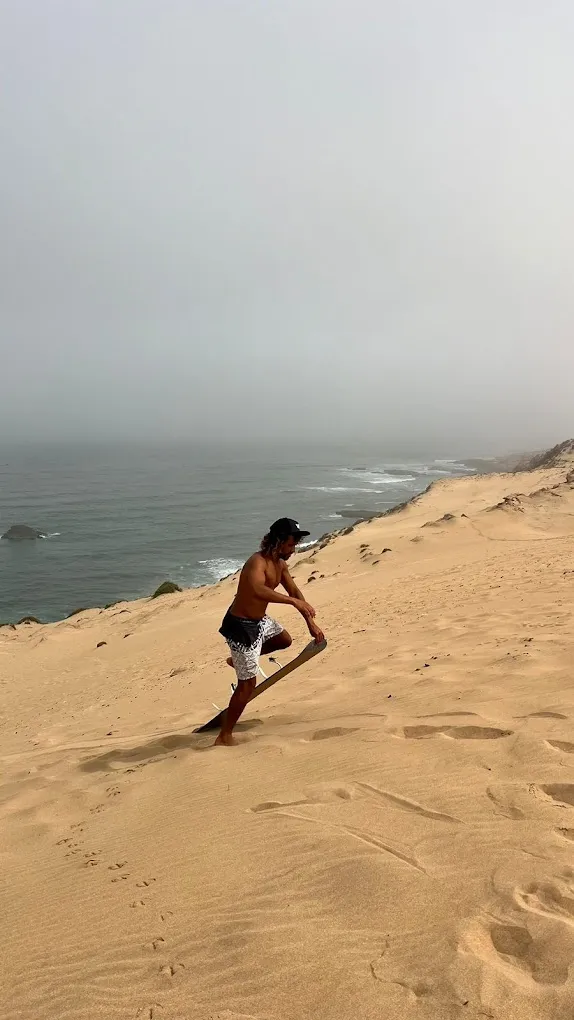Exploring the Old Medina of Marrakech: A Comprehensive Guide to Its Souks
20 يناير 2025Marrakech, often referred to as the "Red City" for its distinctive terracotta buildings, is one of Morocco's most enchanting and culturally rich destinations. At the heart of Marrakech lies the Old Medina, a UNESCO World Heritage site that serves as a vibrant hub of tradition, commerce, and daily life. Central to the Old Medina's allure are its souks, bustling marketplaces that offer an immersive experience into Moroccan culture and craftsmanship. This comprehensive guide delves into the intricacies of the Old Medina's souks, providing everything you need to know to navigate, appreciate, and enjoy these lively markets.
Table of Contents
Introduction
The Old Medina of Marrakech is a living testament to Morocco's rich history and cultural diversity. Its souks are not merely marketplaces but vibrant centers of community life where artisans, traders, and locals converge to exchange goods, stories, and traditions. For travelers, exploring the souks offers an authentic glimpse into Moroccan daily life, artistic craftsmanship, and the dynamic interplay of tradition and modernity.
History of the Old Medina
The Old Medina of Marrakech dates back to the 11th century, founded by the Almoravid dynasty. Over the centuries, it has evolved into a sprawling urban area characterized by its labyrinthine streets, historic architecture, and bustling markets. The medina's design reflects the city's role as a vital trading hub on ancient trans-Saharan trade routes, facilitating the exchange of goods such as spices, textiles, metals, and ceramics.
The architectural landscape of the Old Medina showcases a blend of Islamic, Berber, and Andalusian influences, evident in its mosques, palaces, riads (traditional houses), and hammams (public baths). The souks themselves have retained their traditional layout, with each specialized market area dedicated to specific trades and crafts, preserving centuries-old artisanal skills.
Layout of the Old Medina
The Old Medina is intricately organized into a maze of narrow alleyways and interconnected streets. This organic layout fosters a sense of exploration and discovery, as visitors navigate through the bustling pathways. The medina is divided into various districts, each housing specialized souks. Understanding the medina's layout can enhance your shopping experience, making it easier to locate specific types of goods.
Key districts within the Old Medina include:
Bab Doukkala: Known for its textile and clothing souks.
Bab Agnaou: Famous for its gold and jewelry markets.
Kasbah: Hosts the metalwork and tool souks.
Riad Zitoun Jdid: Home to pottery and ceramics markets.
Each district offers a unique array of products and crafts, contributing to the medina's diverse and vibrant marketplace environment.
The Souks of the Old Medina
The souks are the lifeblood of the Old Medina, embodying the essence of Moroccan trade and craftsmanship. These markets are organized into specialized areas, each dedicated to particular types of goods. From luxurious textiles and intricate jewelry to aromatic spices and handcrafted ceramics, the souks cater to a wide range of tastes and preferences.
Types of Souks
Food Souks: Offering a plethora of spices, dried fruits, nuts, olives, and traditional Moroccan sweets.
Craft Souks: Showcasing pottery, metalwork, wood carvings, and other traditional handicrafts.
Clothing and Textile Souks: Featuring textiles, garments, and accessories, including the famous Moroccan djellabas and kaftans.
Spice Souks: Dedicated to an extensive variety of spices and herbs essential for Moroccan cuisine.
Jewelry and Metalwork Souks: Displaying silver and gold jewelry, decorative metal items, and traditional Moroccan lanterns.
Each type of souk provides a unique shopping experience, reflecting the rich cultural and artistic heritage of Morocco.
Major Souk Sections
Souk Semmarine
Souk Semmarine is arguably the most famous souk in Marrakech, known for its vast array of textiles and clothing. Here, you can find everything from traditional Moroccan garments like djellabas and kaftans to modern fashion items.
What to Find: Fabrics, ready-to-wear clothing, shoes, bags, and accessories.
Tips: Explore different stalls to compare prices and quality. Don’t hesitate to bargain to get the best deal.
Souk Ableuh
Souk Ableuh is the heart of Marrakech's spice market. The air is thick with the aroma of saffron, cumin, paprika, and other essential spices that form the backbone of Moroccan cuisine.
What to Find: A wide variety of spices, herbs, teas, and medicinal plants.
Tips: Purchase whole spices rather than pre-packaged ones for better quality and authenticity. You can also sample different spices before buying.
Souk Ech Chaouen
Named after the blue city of Chefchaouen, Souk Ech Chaouen specializes in colorful textiles and rugs. The name reflects the vibrant colors and intricate patterns reminiscent of Chefchaouen’s iconic blue streets.
What to Find: Berber rugs, carpets, shawls, and other textiles.
Tips: Look for rugs with distinctive patterns and vibrant colors. Bargaining is expected, so negotiate confidently.
Souk Haddadine
Souk Haddadine is dedicated to metalwork and tools. This souk is where you can witness the craftsmanship of Moroccan blacksmiths who create everything from traditional cooking pots to decorative items.
What to Find: Metal tools, cookware, lanterns, and decorative metal art.
Tips: Inspect the quality of metal products before purchasing. Handmade items may take longer to make but offer unique designs.
Souk Talaa Kebira and Talaa Seghira
Souk Talaa Kebira (the Grand Market) and Souk Talaa Seghira (the Small Market) are two of the largest and most diverse sections of the Old Medina’s souks.
Souk Talaa Kebira:
What to Find: A wide range of goods, including textiles, leather products, spices, and electronics.
Tips: Be prepared for a bustling environment. It's an excellent place to find a variety of products under one roof.
Souk Talaa Seghira:
What to Find: Jewelry, gold, silver, and traditional Moroccan ornaments.
Tips: When purchasing jewelry, ensure authenticity by asking about the origin and quality of the materials used.
What to Expect When Visiting the Souks
Atmosphere and Ambiance
The souks are a sensory-rich experience, pulsating with energy and activity. Expect:
Vendors: Enthusiastic and eager to showcase their products.
Sounds: A cacophony of voices, haggling, and the occasional traditional Moroccan music.
Scents: The intoxicating blend of spices, fresh produce, and Moroccan cuisine.
Visuals: A kaleidoscope of colors from textiles, ceramics, jewelry, and other crafts.
Navigating the Maze
The Old Medina's souks are maze-like, with narrow alleyways and interconnected stalls that can be both exciting and overwhelming.
Tips:
Stay Calm: Take your time to explore and enjoy the journey.
Use a Map: Some souks have maps available at information points or your accommodation.
Ask for Directions: Locals and vendors are generally helpful and can guide you to specific sections.
Interactions with Vendors
Engaging with vendors is a significant part of the souk experience.
Etiquette:
Greeting: A simple "Salam Alaikum" (peace be upon you) is appreciated.
Politeness: Maintain a friendly and respectful demeanor.
Bargaining: Be prepared to negotiate prices, as it’s a standard practice.
Shopping Tips
Bargaining and Negotiation
Bargaining is not just expected but is an integral part of the shopping experience in Moroccan souks.
How to Bargain:
Start Low: Begin with a price significantly lower than your target.
Be Confident: Present your offer confidently but respectfully.
Know Your Limits: Decide the maximum amount you're willing to pay beforehand.
Stay Patient: Bargaining can take time, so remain patient and composed.
Walk Away: If the price isn’t right, politely leave. This may prompt a better offer.
Cultural Etiquette
Respecting local customs enhances your interactions and fosters positive experiences.
Key Points:
Dress Modestly: Especially when visiting religious sites or traditional areas.
Respect Personal Space: Be mindful of cultural norms regarding proximity and interactions.
Photography: Always ask permission before photographing individuals, especially women.
What to Buy
Moroccan souks offer a diverse range of products, each reflecting the country’s rich cultural heritage.
Popular Items:
Textiles: Berber rugs, carpets, and traditional garments.
Spices: Saffron, cumin, paprika, and ras el hanout.
Leather Goods: Babouches (slippers), bags, and jackets.
Jewelry: Silver and gold pieces with intricate designs.
Ceramics: Tagines, plates, bowls, and decorative vases.
Metalwork: Lanterns, pots, and decorative items.
Woodwork: Carved furniture and decorative carvings.
Cultural Significance of the Souks
Economic Role
Souks are vital to the local economy, providing livelihoods for thousands of artisans, traders, and vendors. They serve as primary venues for the exchange of goods and services, fostering economic sustainability and community development.
Social Hub
Souks are social gathering places where people meet, interact, and exchange news. They strengthen community bonds and preserve traditional social structures, making them integral to daily life in Moroccan cities.
Preservation of Tradition
Through the sale and creation of traditional crafts, souks help preserve Morocco’s rich cultural heritage. They ensure that artisanal skills and traditional techniques are passed down through generations, maintaining the authenticity and uniqueness of Moroccan craftsmanship.
Family-Friendly Aspects
Exploring the souks can be a rewarding experience for families, offering educational and engaging activities for children and adults alike.
Tips for Families:
Plan Ahead: Choose specific souks or sections to explore to avoid fatigue.
Keep Children Close: The crowded and maze-like environment can be overwhelming; keep a close watch on young children.
Engage in Interactive Shopping: Involve children in selecting souvenirs or spices, making the experience interactive and fun.
Take Breaks: Utilize cafes and restaurants within the souks for rest and refreshments.
Safety Tips
Avoiding Petty Crime
While souks are generally safe, petty crimes like pickpocketing can occur, especially in crowded areas.
Preventive Measures:
Secure Your Belongings: Use anti-theft bags and keep valuables hidden.
Be Mindful of Your Surroundings: Stay alert, especially during busy times.
Avoid Flashy Displays: Don’t wear expensive jewelry or display high-value items prominently.
Staying Safe in Crowded Areas
The bustling nature of souks can pose challenges, particularly in maintaining personal safety.
Safety Strategies:
Stay Together: Keep your family grouped to avoid losing anyone in the crowd.
Establish Meeting Points: In case anyone gets separated, have a predetermined meeting spot.
Use Identification: Children can wear ID bracelets with contact information.
Best Times to Visit the Souks
Timing your visit can significantly enhance your experience in the souks.
Season Considerations
Spring (March to May): Pleasant weather and vibrant floral displays make it an ideal time for shopping.
Autumn (September to November): Comfortable temperatures and reduced crowds compared to peak summer months.
Winter (December to February): Cooler weather, though the souks remain lively. Be prepared for shorter daylight hours.
Summer (June to August): Hot temperatures and larger crowds, but extended shopping hours in the cooler evenings.
Time of Day
Morning: Less crowded, allowing for a more relaxed shopping experience.
Afternoon: Peak hours with maximum activity and vendor availability.
Evening: Cooler temperatures and vibrant nightlife in the medina.
Accessible Souks
While Moroccan souks are traditionally designed for pedestrians, accessibility can vary.
Considerations:
Narrow Streets: Souks are often labyrinthine with narrow alleyways, making it challenging for wheelchairs and strollers.
Uneven Pavements: Cobblestone streets can be difficult to navigate.
Limited Signage: Navigating without a guide can be challenging for those unfamiliar with the area.
Tips for Accessibility:
Use a Baby Carrier: For families with young children, a carrier may be more practical than a stroller.
Plan Your Route: Identify accessible routes and main pathways within the souks.
Seek Assistance: Don’t hesitate to ask vendors or locals for help in navigating the markets.
Dining and Refreshments in the Souks
Souks are not just for shopping; they also offer a variety of culinary delights that reflect Morocco’s rich gastronomic heritage.
Street Food and Snacks
Sampling street food is an essential part of the souk experience.
Must-Try Items:
Tagine: A slow-cooked stew with meat, vegetables, and spices.
Couscous: Steamed semolina served with meat and vegetable broth.
Pastilla: A savory pie filled with pigeon or chicken, almonds, and spices.
B’stilla: Similar to pastilla, often served as a gourmet dish.
Msemen: Flaky Moroccan flatbread, typically served with honey or butter.
Harira: A traditional Moroccan soup made with tomatoes, lentils, and chickpeas.
Traditional Moroccan Tea
Moroccan Mint Tea is a staple beverage that embodies hospitality and tradition.
What to Expect:
Preparation: Green tea infused with fresh mint leaves and sweetened with sugar.
Serving: Typically poured from a height to create a frothy top, symbolizing generosity.
Where to Enjoy:
Cafés within Souks: Relax and enjoy tea while observing the lively market activities.
Tea Stalls: Many vendors offer freshly brewed tea to complement your shopping experience.
Important Landmarks within the Old Medina
Exploring the souks is more enriching when combined with visits to nearby landmarks.
Koutoubia Mosque
Description: The largest mosque in Marrakech, known for its impressive minaret.
Accessibility: Non-Muslims are not permitted inside, but the exterior and surrounding gardens are worth visiting.
Bahia Palace
Description: An exquisite 19th-century palace showcasing Moroccan architecture and intricate designs.
Highlights: Stunning courtyards, gardens, and ornate interiors.
Saadian Tombs
Description: Historic tombs of the Saadian dynasty, known for their elaborate decoration.
Highlights: Intricate tile work, marble floors, and beautifully decorated chambers.
Dar Si Said Museum
Description: A museum dedicated to Moroccan arts and crafts.
Highlights: Exhibits on traditional jewelry, textiles, and wood carvings.
Conclusion
The Old Medina of Marrakech and its souks offer an unparalleled glimpse into Morocco's vibrant culture, rich history, and artistic craftsmanship. Navigating the maze-like markets, engaging with friendly vendors, and discovering unique handmade goods provide a deeply immersive and memorable experience. Whether you're seeking traditional Moroccan textiles, aromatic spices, intricate jewelry, or simply the lively ambiance of a bustling marketplace, the souks of Marrakech cater to all interests and preferences.
By understanding the layout, respecting cultural norms, and following essential safety tips, you can navigate the souks with confidence and appreciation. Embrace the sensory delights, savor the local cuisine, and immerse yourself in the dynamic energy that makes the Old Medina's souks a quintessential part of any Marrakech visit.
Safe Travels!
Embarking on a journey through the souks of Marrakech's Old Medina promises an unforgettable adventure filled with vibrant colors, enticing aromas, and rich cultural experiences. Whether you're a seasoned traveler or a first-time visitor, the souks offer a unique and immersive way to connect with Moroccan heritage and craftsmanship. So, lace up your comfortable shoes, embrace the lively spirit of the markets, and let the souks of Marrakech captivate your heart and senses.
Hi, I'm Camila Elise. I'm a passionate writer and design enthusiast at rents.ma, blending modern insights with the timeless elegance of Moroccan culture. Join me as I explore innovative ideas to transform your living space into a true reflection of your style.




